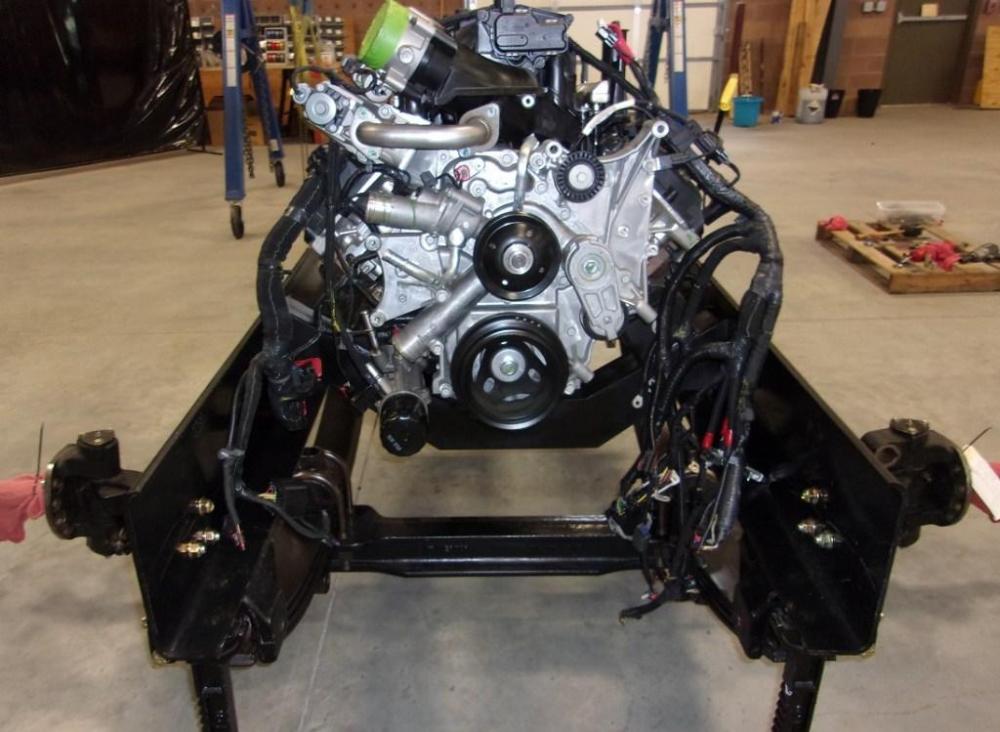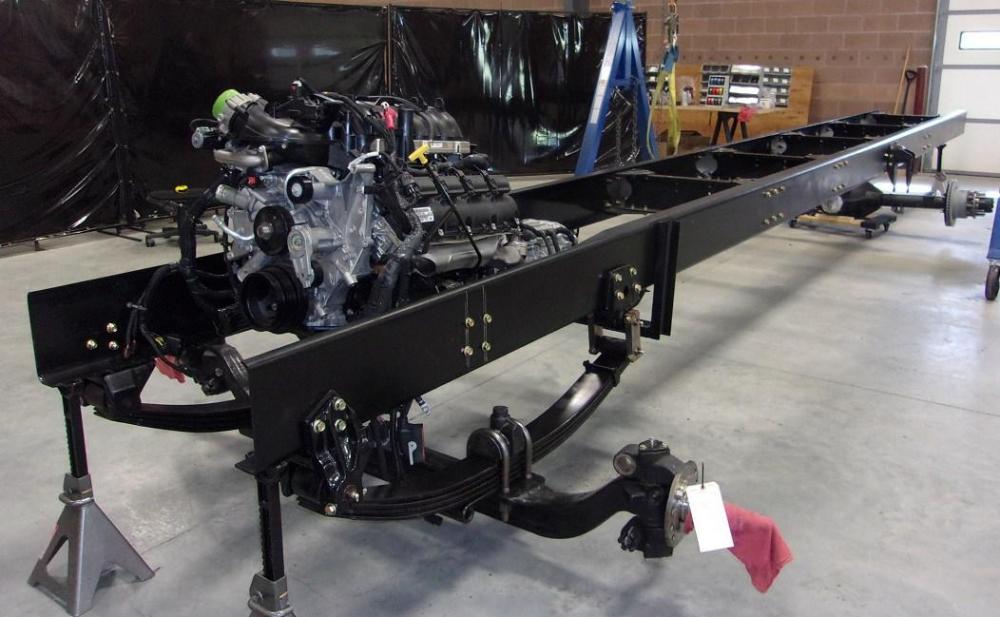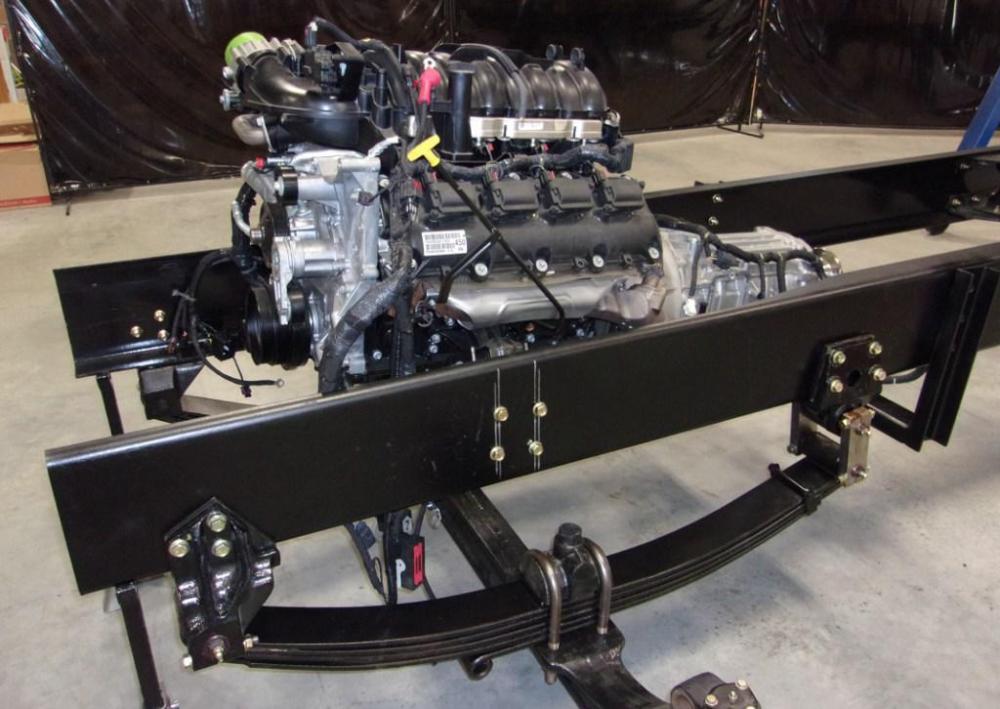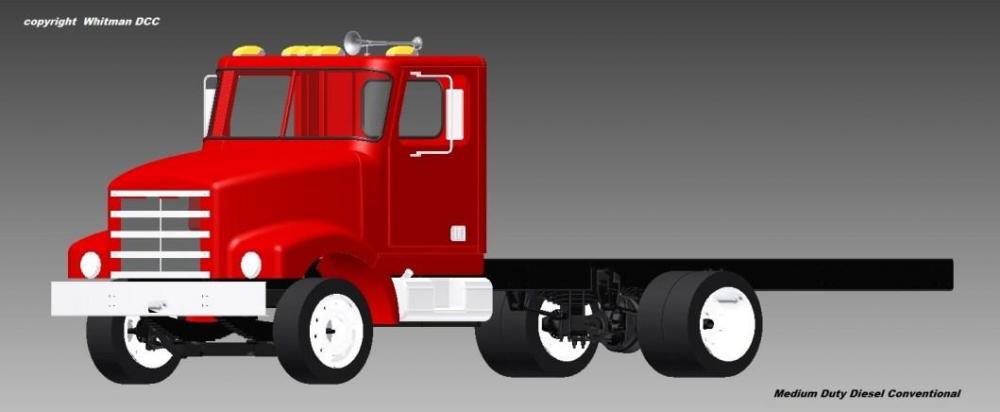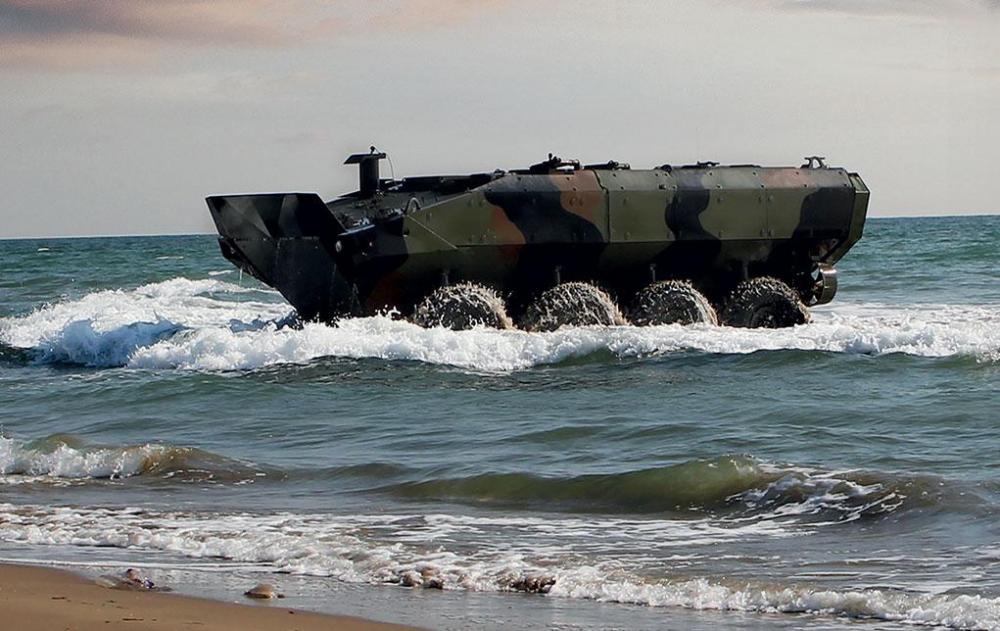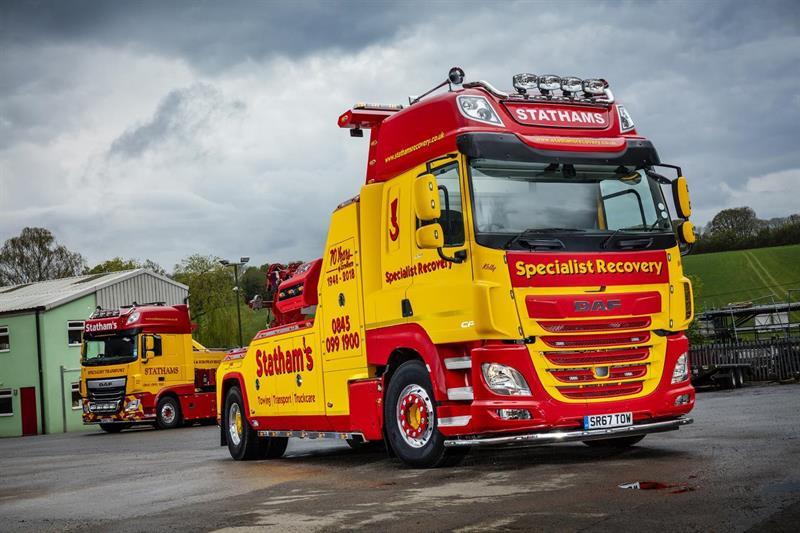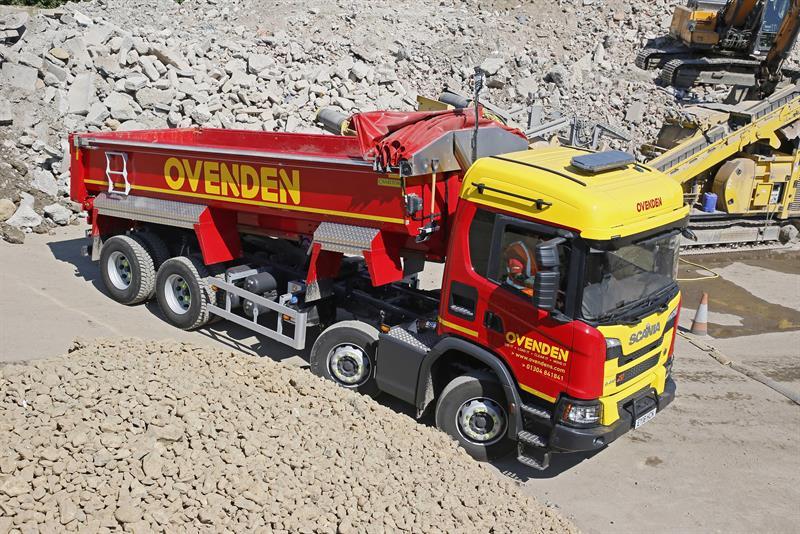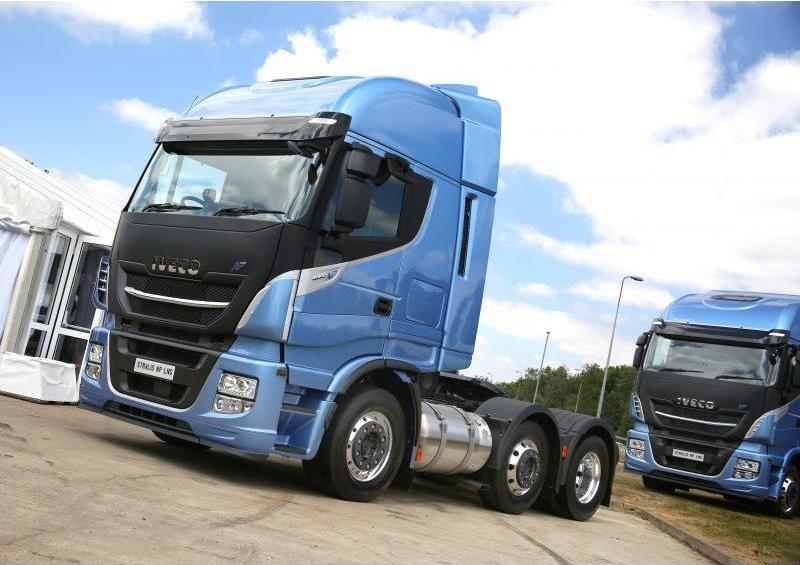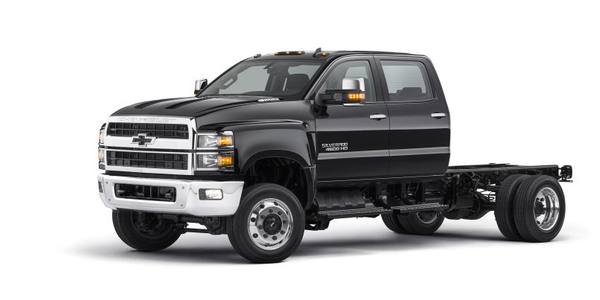
kscarbel2
Moderator-
Posts
18,550 -
Joined
-
Days Won
112
Content Type
Profiles
Forums
Gallery
Events
Blogs
BMT Wiki
Collections
Store
Everything posted by kscarbel2
-
A bubble by the rich, for the rich Keris Lahiff, CNBC / July 16, 2018 Look to the stock market and you’d assume Wall Street was doing just fine. The S&P 500 has come back to March highs, the Dow is back to positive for 2018, and the Nasdaq is at fresh records. It’s all built on shaky foundations, said longtime market bear and former Republican Congressman Ron Paul. This market is in the “biggest bubble in the history of mankind,” and when it bursts, it could cut the stock market in half, he told CNBC’s “Futures Now” Thursday. “I see trouble ahead, and it originates with too much debt, too much spending,” Paul said. This isn’t the first time Paul has made such dire warnings. During a “Futures Now” appearance in August 2017, he predicted a 50 percent drop in the market, a call he has doubled down on a number of times since. Since that appearance, the S&P 500 has rallied 15 percent. Paul belongs to the Libertarian Party, a faction that emphasizes constrained government spending. He sees federal spending and monetary policy as dual forces inflating a market bubble. “The Congress spending and the Federal Reserve manipulation of monetary policy and interest rates — debt is too big, the current account is in bad shape, foreign debt is bad and it’s not going to change,” he said. Paul isn’t alone in his critique. A number of politicians have voiced concern over ballooning deficits, including current House Speaker Paul Ryan, who raised a warning on the nation’s debt in 2012. The Congressional Budget Office estimates that federal deficits will average $1.2 trillion a year from 2019 to 2028, according to its April economic outlook. Its 2018 deficit estimates rose by $242 billion over previous forecasts made in June 2017. The federal agency said the revision was mainly owing to lower projected revenues tied to tax reform. To Paul the decision-making arm of the Fed is equally at fault in creating a market bubble. “The Fed will keep inflating, and that distorts things,” Paul continued. “Now they’re trying to unwind their balance sheet. I don’t think they’re going to get real far on that.” The Fed is more than two years into its rate-hiking cycle. In conjunction with rate hikes, the Fed is also unloading assets from its balance sheet, which expanded to $4.5 trillion during its post-financial crisis quantitative-easing program. Paul is not confident much will change to divert from the disaster he predicts. “The government will keep spending, and the Fed will keep inflating, and that distorts things,” said Paul. “When you get into a situation like this, the debt has to be eliminated. You have to liquidate the debt and the malinvestment.” Paul reiterated his call on Thursday for a potential 50 percent sell-off on the stock market.
-
IVECO launches LNG-powered tractor for 44-tonne operation
kscarbel2 replied to kscarbel2's topic in Trucking News
Just the opposite Bob, LNG tanks are lighter. Agreed, the Stralis is a sharp looking COE. LNG example - http://www.360che.com/tech/170706/81278_all.html CNG example - http://www.360che.com/tech/170719/81599.html -
T-Line, successor to Diamond T, puts new medium truck into production
kscarbel2 replied to kscarbel2's topic in Trucking News
Recall how the Mack Eastern R-Model had a tapered frame, while the Mack Western variant, the RL/RS Value-Liner, had straight rails. If one can get away with straight rails, there are cost savings. Generally today, it's impossible due to, for example, the width requirements of the cooling package (radiator) and the vastly increased amount of external engine accessories.. -
IVECO launches LNG-powered tractor for 44-tonne operation
kscarbel2 replied to kscarbel2's topic in Trucking News
For local operaton, e.g. city buses, CNG is popular. But in long-haul, most operators and countries prefer LNG. http://www.360che.com/tech/170706/81278_all.html http://www.360che.com/tech/170719/81599.html -
U.S. Marine Corps to buy Italian amphibious combat vehicles
kscarbel2 replied to kscarbel2's topic in Odds and Ends
Pretty sad summary of the present when not a single US company can present our military with a class-leading design. -
Defense Update / June 20, 2018 The U.S. Marine Corps has selected a new wheeled, amphibious combat vehicle (ACV) for the service. Following a successful Milestone C decision by the Assistant Secretary of the Navy for Research, Development, and Acquisition, the contract options worth $198 million will allow BAE Systems to build 30 low rate production vehicles, which will start delivering in the fall of next year. These vehicles will begin the transition of a portion of the Assault Amphibious Vehicle fleet. The new vehicle designated ACV 1.1 by the Corps is an advanced 8×8 open ocean-capable vehicle that is equipped with a new 6-cylinder, 700HP engine, which provides a significant power increase over the tracked LTVP-7A Assault Amphibious Vehicle (AAV), which is currently in service and has been in operation for decades. Based on the Italian SuperAV design introduced by Iveco Defense Vehicles, ACV provides exceptional mobility in all terrains, a suspended interior seat structure for 13 embarked Marines, blast-mitigating positions for a crew of three, and improved survivability and force protection over currently fielded systems. The team has conducted extensive risk mitigation testing and evaluation for water operations, land mobility, and survivability that have proven the solution’s capabilities. The design is adaptable to accommodate growth for future technologies or requirements. Iveco Defence Vehicles and BAE Systems teamed together in the very early phases of this program to offer a superior solution to the US Marines for their ACV requirement. The team has already built 16 prototypes of the vehicle, as part of the Marine Corps competition for the next generation of vehicles to get the Marines from ship to shore to engage in land combat operations. BAE Systems will be the prime contractor for the program with CNH Industrial subsidiary Iveco Defence Vehicles providing the 8×8 amphibious armored platform design, core components, and services. Work on the program will be performed at the company’s facilities in Aiken, South Carolina; Sterling Heights, Michigan; Minneapolis; Stafford; San Jose, California; and York, Pennsylvania. The BAE Systems team conducted its own extensive risk mitigation testing and evaluation for land mobility, survivability, and swim capabilities that proved its vehicle’s performance prior to delivering the first 16 prototypes to the Marine Corps in 2017. this delivery was part of service’s evaluation process, where BAE and SAIC built 16 prototypes each for extensive testing before the final award that was announced yesterday. Over the past 15 months, the company supported the Marine Corps’ rigorous Developmental Testing and Operational Assessment of the vehicles, which performed superbly in water and land operations, payload, and survivability. .
-
Transport Engineer / July 5, 2018 Dunstable-based vehicle recovery operator Statham’s Motor Engineers has taken delivery of a DAF New CF 530 FA chassis with NRC recovery bodywork, which also features a detachable tag-axle. Featuring two-axle and three-axle options, the 80-tonne GTW [176,370lb Gross Train Weight] New CF operates primarily as a 4x2 rigid, although the tag-axle conversion gives greater operational flexibility. Fitting takes around 30 minutes and allows Statham’s to recover heavier vehicles, typically eight-wheelers. “The NRC crane and winches mean we can recover almost any car and light commercial vehicle, but it is the versatility of the interchangeable axle which allows us to lift heavier vehicles above 14 tonnes and up to 44 tonnes,” says owner John Statham. “We now have one vehicle fulfilling the role of two.” In addition, the vehicle’s 13-litre 530bhp engine is already notching up 9.5mpg – “an extremely welcome bonus”, adds Statham. The NRC plastic-composite recovery body includes a 25-tonne sliding crane, under-lift equipment and dual winches. VDZ equipment provides a towing option where dual tow-jaws are fitted on the casualty vehicle, giving an alternative to front-end lifting. DAF dealer North West Trucks supplied the New CF; aftersales support is provided through DAF’s local service point HTC Hemel. .
-
Transport Engineer / July 10, 2018 Kent-based Ovenden Tipper Services has taken delivery of the first of its order of new tippers from Charlton, citing the bodybuilder’s ability to source and install every part of the high bodywork specification. Carried by Scania Next Generation XT chassis with G cabs and 13-litre 405bhp engines, Ovenden chose lightweight all-steel curved floor Charlton SuperLite bodies fitted with air-operated automatic tailgates. Each truck also features Edbro TS32 underfloor tipping gear, a weather-sealed Shurco front to back sliding sheeting system with full remote control, a rearward facing ‘traffic light’ load weighing display mounted at the front of the body and a Brigade 360-degree ‘birds eye’ camera system. All equipment was supplied and fitted by Charlton. “As a complete package, our latest tippers are pretty much unbeatable,” says company director Alex Ovenden. “We’ve gone for a higher spec than ever this time around, with the really big bonus being that Charlton supplies and fits everything we ask for... And everything was delivered on budget, on time.” He adds: “Our tipper work is changing, with higher demand for both recycled concrete and on-site earthworks projects, and the new trucks have been designed and specified to reflect that. We continue to run some alloy bodies, but what you gain in extra payload you lose in durability. “We need trucks that can handle any job that comes along, and these lightweight steel SuperLites give us exactly that capability.” Driver Paul Bradford is also impressed: “I much prefer the underfloor tipping gear, both for its extra stability and higher angle of tip. The sheeting system is also great because I can open and close it by full remote control whether I’m inside or outside of the cab. “Overloading is now a thing of the past, too, because the body-mounted traffic light display system immediately tells the excavator driver when the maximum limit’s been reached. All small things perhaps, but taken together they speed up the job and make the truck that bit more efficient.” .
-
IVECO launches LNG-powered tractor for 44-tonne operation
kscarbel2 replied to kscarbel2's topic in Trucking News
The US needs to catch up with the world in trucking efficiency and allow 97,000 pound (44 metric ton) artics. -
Transport Engineer / July 11, 2018 IVECO has unveiled the Stralis NP 460, the first pure gas-powered 6x2 tractor for 44-tonne [97,003lb] operation. Launched yesterday (10 July) at an event for customers and dealers at Gasrec’s refuelling site at the Daventry International Rail Freight Terminal, the vehicle is the first three-axle tractor to operate on 100% liquefied natural gas (LNG). It has been engineered in both right-hand and left-hand drive variants and, says IVECO’s Stuart Webster, its launch “marks the moment natural gas moves into mainstream UK volume in a big way”. He adds: “Bringing this new vehicle to market is the culmination of our more than 20 years’ development of natural gas technology – packaged into a 6x2 tractor which can deliver a true competitive advantage for UK fleets on both regional and long-distance missions.” Vehicle range has been a key factor, and the Stralis NP 460 6x2 runs for around 750km – ideal for operators whose vehicles go out and back on the same day, says the manufacturer. The LNG tanks, mounted either side of the chassis, are designed to be the largest possible to still allow 22.5in wheels across all three axles. The vehicle is powered by the 12.9-litre IVECO Cursor 13 NP single-fuel engine and the latest generation 12-speed Hi-Tronix automated transmission, with new functions such as the GPS-based Hi-Cruise predictive cruise control and gear-shifting. Natural gas delivers a 99% reduction of PM and 60% in NOx compared to Euro VI limits, while CO2 emissions can be cut by up to 95% when running on liquefied biomethane. The Cursor 13 NP engine records less than 71dB on the PIEK quiet truck test. Other features include IVECO’s fuel-saving Driving Style Evaluation system to monitor and improve driver behaviour, an Ecoswitch speed and torque limiter, Ecofleet for the most efficient shifting strategy, an optimised rear axle ratio, low-rolling resistance tyres and access to IVECO’s Fuel Consultancy Services. The Stralis NP has service intervals of 90,000 km and it is available with a range of IVECO Elements R&M contracts. Using telematics, each vehicle will be monitored by IVECO’s gas technology team to ensure any potential issues are quickly identified, so boosting vehicle uptime. The Stralis NP 460 6x2 is available to order from dealers now; the first demonstrators are expected to be on the road in October 2018. .
-
The non-emissions 12-valve B Series engines averaged 22 miles per gallon.
-
Disc wheels....open cab.....nice.
-
Trump’s Trade War With China Pierces the Heart of Michigan
kscarbel2 replied to kscarbel2's topic in Odds and Ends
No. Germany is handing their technology to the Chinese on a silver platter. In China, the Japanese are far better than the Germans at withholding the secrets of their technology. -
More GOP Congressmen Question Legitimacy of EPA Glider Kit Study David Cullen, Heavy Duty Trucking (HDT) / July 13, 2018 Yet more Republican members of the House of Representatives have fired a broadside at the Volvo Group, as well as at the Engine Manufacturers Association, in the ongoing congressional questioning of the legitimacy of a study on glider kit regulations conducted recently by the Environmental Protection Agency. On July 12, the Republican leadership of the House Science, Space, and Technology Committee sent a letter to EPA Acting Administrator Andrew Wheeler requesting information on the study, which was conducted by the National Vehicle and Fuel Emissions Laboratory. Released in 2017, the study compared emissions from glider trucks to non-refurbished or unmodified or, simply put, conventionally manufactured trucks. In the report, EPA testing found that the NOx levels of glider vehicles are four to 40 times higher than that of current powertrains and that associated particulate matter levels are 50 to 450 times higher. What the committee’s letter questions in no uncertain terms is whether the study was put together objectively, as would be expected. “Documents obtained by the Committee indicate that representatives from Volvo and the Truck and Engine Manufacturers Association engaged in what appears to be a concerted effort with EPA staff at the NVFEL to shape the study’s design to achieve a desired outcome,” the committee alleges in a press release on the letter. “In one email, the representative from Volvo lays out the ‘ideal’ test program for the NVFEL, listing specifically the test articles to use and the schedule by which the test program should be conducted,” the committee’s letter states. “These documents raise serious questions as to the objectivity and legitimacy of the NVFEL study,” the letter continues. “To better assist the Committee in understanding how EPA intends to uphold scientific integrity and how it undertakes decisions to perform scientific studies underlying regulation, we request a briefing for Committee staff by the appropriate EPA officials who are familiar with this matter.” The committee also requested all documents related to the NVFEL glider study. The letter was signed by Committee Chairman Lamar Smith (R-TX), Rep. Bill Posey (R-FL), Oversight Subcommittee Chairman Ralph Abraham, MD (R-LA), Oversight Subcommittee Vice Chairman Clay Higgins (R-LA), Environment Subcommittee Chairman Andy Biggs (R-AZ), Space Subcommittee Chairman Brian Babin (R-TX), and Rep. Gary Palmer (R-AL). Commenting on the July 12 letter from the Science, Space, and Technology Committee leaders, Volvo Group spokesperson John Mies told HDT that, “Like most of the trucking industry, the Volvo Group for several years now has argued that the improper use of glider kits is bad for the environment and unfair to manufacturers who have invested in the latest environmental controls." “All our communication and cooperation with the EPA on this issue has been an entirely appropriate part of a broad trucking industry advocacy effort [???] – we did nothing improper,” he added. Earlier this month, two other letters were sent to EPA — one sent jointly by four House GOP members and the other by the Republican chairman of the House Subcommittee on the Interior, Energy, and Environment— alleging that Sweden-based Volvo Group (parent firm of both Volvo Trucks North America and Mack Trucks) had undue influence with some employees at the agency, provided glider kits for the testing, and that the study was done without the approval or knowledge of EPA leadership. The letters also asked EPA to look into a potential lobbying violation by the Truck and Engine Manufacturers Association. The back story to all the back and forth on glider kits is this: In October 2016, EPA and the National Highway Traffic Safety Administration issued the final GHG/Fuel Efficiency Phase 2 rule. Among other things, this rule required engines in new “glider” vehicles to meet the emissions standards for the year the vehicle was assembled, rather than the year the engine was manufactured. In July 2017, after glider kit-maker Fitzgerald Glider Kits petitioned the agency to do so, EPA announced it intended to revisit the glider kit provisions. In November, it issued its official proposal, which would repeal emission requirements for glider vehicles, glider engines, and glider kits. The repeal proposal has yet to become a final rule. The proposal to allow a glider kit loophole to the GHG/fuel economy regulations has drawn criticism from environmental groups, truck and engine makers, the American Trucking Associations, some large fleets such as FedEx and PepsiCo, two former EPA administrators, some state attorneys general, and some Democratic senators, among others. The most recent development came on July 9, when EPA said it will not enforce for 2018 and 2019 a 300-unit production cap put in place on the manufacture of glider kits that do not comply with Phase 2 GHG emission rules. EPA said this action is being taken because it is working to finalize its proposed rule to repeal “certain emission requirements” on glider kits that were imposed under the Phase 2 rules. News of the enforcement loophole was broken by The New York Times one day after the resignation of EPA Administrator Scott Pruitt on July 5.
-
Agreed, they are ridiculously overpowered. Dodge got airborne with Cummins in the second generation 1994-2001 BR/BE pickup/cab&chassis trucks. The 12-valve Cummins B with the 5-speed New Venture 4500HD manual was rated at 175hp, the automatic paired with a 160hp rating. With their vast torque, they offered abundant performance.
-
Mark, I completely understand where you're coming from. From a sales engineering perspective, my goal is to evenly distribute the load on the chassis, taking full advantage of the front axle's rated capacity, as I do with the rear.
-
Trump’s Trade War With China Pierces the Heart of Michigan
kscarbel2 posted a topic in Odds and Ends
Ana Swanson, The New York Times / July 13, 2018 DETROIT — China’s flag flies high above Henniges Automotive, alongside those of Germany, Mexico, Canada and other nations, reflecting the global nature of Michigan’s auto industry and, increasingly, its reliance on Beijing. Henniges, which produces sealing products for cars, was bought in 2015 by the Aviation Industry Corporation of China, a [Chinese Communist Party (CCP)-controlled] state-owned company that has snapped up other investments in the Detroit area, including the automotive supplier Nexteer, which sits just across Interstate 75 from Henniges. Over the past several years, Beijing [in effect the Chinese Communist Party] has steadily pumped billions of dollars’ worth of investment into Michigan, buying crumbling factories, building new ones and supporting more than 10,000 jobs in the state. But where Michigan sees an economic partner [???], President Trump sees an “economic enemy” — one intent on overtaking America’s competitive edge by stealing technology, trade secrets and jobs from domestic companies. As Mr. Trump tries to punish China with tariffs and other restrictions, Michigan is caught in the cross hairs, with its ability to remain competitive and develop emerging technologies like autonomous vehicles, robotics and artificial intelligence highly dependent on ties to international markets, including China. “The automotive industry is a global industry,” said Michael O’Kronley, a top executive at A123 Systems, an electric vehicle battery maker purchased out of bankruptcy by the [CCP-backed] Chinese company Wanxiang in 2013. “If you’re going to supply products into that, you need to be global.” General Motors now sells many more cars in China than it does in the United States [not true], and the largest exporter of cars from the United States by value is not an American brand, but BMW [true - South Carolina-built SUVs]. By some calculations, the car with the highest proportion of United States and Canadian-made content is the Honda Odyssey — and even that includes roughly a quarter of foreign-made parts. Companies — and their workers — say they recognize there are certain risks from sharing their technological secrets with Chinese competitors, but they say it is no longer a choice whether Michigan, the automotive capital of North America, should engage with China, the world’s largest auto market. “You can’t separate the two,” Jerry Xu, former president of the Detroit Chinese Business Association, said of China and Michigan. “You’re going to kill the industry if you try.” The inevitability of foreign ties has even filtered down to the industry’s rank-and-file workers, who — after witnessing years of layoffs and plant closings — say it matters less who owns their company than that it continues to survive. “There’s Japanese owners, there’s Chinese owners,” said Roy Pierce, an autoworker who, for more than 20 years, has helped make interiors for vehicles like the Jeep Wrangler and Ford F-150 at a facility in Port Huron, Mich., near the Canadian border. “As long as they’re making it here, I can’t complain. It’s still paying our wages.” Michigan is one of the industry’s global hubs, home to more than three-quarters of all automotive research and development that occurs in North America. The Detroit area boasts two major testing sites for autonomous vehicles, sprawling compounds of interstates, guardrails, and mock pedestrians and bicyclists that companies and researchers use to test their technology. At the University of Michigan, a driverless vehicle shuttles students around the campus. Global competition is stiff, however. China’s progress on both autonomous and new energy vehicles is booming, in part thanks to generous subsidies and government funding, restrictions on gasoline cars, and regulations that require Chinese automakers to produce a certain number of low-emission cars per year. Last year, China accounted for more than half of the electric vehicles sold globally, according to the International Energy Agency. Although many in Michigan say China is on equal footing or still behind the United States in technological development, they do not expect that edge to last long. To stay competitive, Michigan has spent much of the past decade trying to woo foreign investment from Beijing alongside longstanding investors from Japan, Europe and South Korea [Spent 10 years handing over US technology to foreign aggressors]. In early May, as the Trump administration prepared to roll out tariffs and investment restrictions against China, Rick Snyder, Michigan’s Republican governor, welcomed more than 150 potential Chinese investors to tour Detroit, Ann Arbor and Grand Rapids. While Washington was projecting a hostile climate, Mr. Snyder told the delegation that Michigan was “open for business.” In each of the past seven years, Mr. Snyder has traveled to China to visit entrepreneurs and solicit investment. The overtures have paid off. Oakland County, a Detroit suburb home to many auto suppliers, ranks third nationally among American counties in terms of the number of jobs that depend on Chinese investment. Chinese firms have also flooded into Wayne County, which includes downtown Detroit, to buy up defunct office buildings and vacant factory space. Larry Williams, the president of Henniges, said a cash infusion from [CPC-controlled] Aviation Industry Corporation of China (AVIC) allowed his company to expand abroad and add jobs at its American facilities, including its Michigan headquarters. That investment was a key to the company’s remaining competitive globally, he said, since major automakers like Ford, Volkswagen and Daimler now standardize their products internationally and will no longer do business with suppliers that can compete in only one market. “I don’t think they’re coming here to steal technology or steal intellectual property,” Mr. Williams said of the Chinese. “I think they’re coming here to learn, but not to take it back to China and forget about North America. They want to create global companies.” [Did Mr. Williams have a straight face when he said that?] The acquisition by AVIC, a [massive] Chinese state-owned company that supplies aircraft and weapons to the Chinese military, was reviewed by the interagency Committee on Foreign Investment in the United States, which vets foreign deals for national security risks. Mr. Williams said he feared that, in today’s climate of rising suspicions toward China, the deal would be subjected to even more intense scrutiny. The Trump administration has taken a far more pessimistic view of Chinese investment, particularly in technology and manufacturing, and is supporting legislation that would make it harder for foreign companies to invest in American companies like Henniges. Peter Navarro, a top trade adviser to Mr. Trump, has argued that China’s trade surplus with the United States has given it vast financial resources to buy up American companies, a process he describes as “conquest by purchase.” Other White House officials have said that some loss in Chinese investment, especially in sensitive technologies, is nothing to be dismayed about. “There are a lot of areas where we do not want Chinese investment: militarily sensitive things, some areas of high tech,” Wilbur L. Ross Jr., the commerce secretary, said. “There are lots of areas where we do welcome it, and that’s the prerogative of any country.” Mr. Trump’s trade policies are beginning to chill Chinese investment. To pressure Beijing to change its trade practices, the president has put tariffs on tens of billions of dollars’ worth of Chinese products and threatened hundreds of billions of dollars more, especially goods that feed into the “Made in China 2025” plan to cultivate high-tech industries. He has also proposed expanding government reviews of foreign investment. Those actions, combined with tighter restrictions by the Chinese government on money flowing outward, are stemming Chinese investment in the United States. It plummeted more than 90 percent between the first half of 2017 and the first half of 2018, to its lowest level in seven years, according to tracking by Rhodium Group. He Xian, a lawyer for the firm Butzel Long who helps arrange Chinese investments in Michigan, said the tariffs are actually encouraging some Chinese companies to move their operations to the United States, especially if they are seeking to supply to the American market. But many other Chinese clients that depend on international ties are choosing to invest elsewhere because of tariffs and other barriers, as well as growing antagonism toward China more generally. One of Butzel Long’s clients, a Chinese entrepreneur who was planning to set up a $10 million research and development facility in Michigan, recently chose to go to Germany instead because of concerns over new regulations on licensing and technology transfer. Another Chinese company Mr. Xian worked with had been planning to import 5,000 tons of beef a year from Michigan — a win for the Trump administration, which reached a deal last year to finally open the Chinese market to American beef. But in recent months, the Chinese company decided to give up on the deal, seeing the threat of a 25 percent Chinese tariff on American beef as too great a risk. “We need predictable, stable policies,” Mr. Xian said. "Without certainty, nothing can happen.” The auto industry is facing other pressures from the president’s trade agenda. His administration is investigating the national security threat posed by imported autos and auto parts, which could result in sweeping tariffs for the industry. Steel and aluminum tariffs levied by the administration earlier this year are raising material costs for car companies, while the president’s threats to withdraw from the North American Free Trade Agreement would put the industry’s most valuable export markets at risk. The Trump administration has pointed to a rising share of imports in the American automobile market and falling numbers of manufacturing jobs as evidence that the industry needs help — though many economists attribute these trends in large part to the irreversible processes of globalization and automation. The administration also sees the auto market as a key to reducing what it sees as an unsustainable trade deficit. Mr. Ross said at an investment forum in June that the trade deficit “really has two sets of origins.” “One is a geographic one, that’s called China,” he said. “The other is a product one, that’s called automotive. If we don’t solve those two, we will not be able to do much to fix the trade deficit.” But to many Michigan firms that have benefited from ties to China, the strategy appears counterproductive to America’s long-term growth. As members of the United Automobile Workers, the industry’s main labor union, gathered for their constitutional convention in downtown Detroit, they acknowledged a wariness of foreign takeovers, but said investment from abroad had benefited them and their colleagues in the past. Dominic Miccichi, a 24-year-old autoworker from Tiffin, Ohio, said that a Chinese company, Ningbo Jifeng Auto Parts, was bidding to take over his plant, Toledo Molding and Die, by buying its current German owner, Grammer. Mr. Miccichi admitted that the idea of American companies being bought up by the Chinese “puts a bad taste in your mouth,” but said that the deal actually might benefit his fellow workers by bringing the plant more money and more opportunities for expansion. “We lose a lot of business because we’re not global,” he said of his factory near Toledo. “We used to make the interior of the Wrangler. That’s gone.” -
I still see the conventional cab design as archaic. Look at that 4-door......you can't possibly get any load weight on the front axle. With the engine underneath a low-cab-forward, you have no wasted space, superior maneuverability and visibility, and far better load weight distribution. That vast real estate between the front bumper and windshield, the hood (bonnet), serves no purpose (It is commendable that the hood tilts though....finally). From an aesthetic point of view, it looks the part of a Class 4 or 5, but in no way like a Class 6, whereas the F-650 looks like a full-blown Class 6, even if slightly smaller in stature that a Class 6 DuraStar (MV). Park a Chevrolet 6500HD next to a DuraStar, and there's no comparison.
-
Chevrolet Silverado Chassis Cabs Start at $48,465 Heavy Duty Trucking (HDT) / July 12, 2018 The manufacturer suggested retail prices (MSRP) for the 2019 Chevrolet Silverado chassis cab trucks will start at $48,465 for the 4500HD, the automaker announced. The chassis cab lineup includes the 4500HD, 5500HD, and 6500HD Silverado models. Pricing includes a $1,495 destination charge, but excludes taxes, title. and additional dealer fees. The Silverado will be available in 2WD and 4WD and will be powered by a Duramax 6.6L diesel engine with 350 horsepower and 700 lb.-ft. of torque and Allison transmissions with a Power Take Off (PTO) option. “Bucket truck builders, fleet managers and many other customers told us they face a dilemma when their GVWR needs exceed 19,500 lbs.,” said John Schwegman, director of Commercial Product and Medium Duty at GM Fleet. “Some pay for expensive aluminum bodies to save weight so they can stay with a Class 5 chassis. Others may spend $10,000 or more to purchase a larger truck with much more GVWR than they need. The Silverado 6500HD gives them capability and protects their bottom line. It’s a great solution.” The truck's frame is designed with one-piece straight rails with no rivets or brackets on top to interfere with the mounting of custom-made bodies. There are no obstacles to work around helping to save time and money during the upfit process. In addition to the straight frame rail design, more frame lengths are offered to help customers specify the exact truck to suit their needs. The truck is designed to be easy to service, with a clamshell hood and a wheel cut of up to 50 degrees that can give technicians better engine access than trucks with conventional hoods. Optional equipment includes a twin-tank fuel capacity of up to 65 gallons, a factory-installed air suspension and a full suite of available connectivity, including OnStar, Commercial Link and a built-in 4G LTE Wi-Fi hot spot. 2019 Chevrolet Silverado Chassis Cab Base MSRP Work Truck Trim 4500HD 5500HD 6500HD Regular Cab 2WD $48,465 $51,100 $54,575 Regular Cab 4WD $51,365 $54,000 $57,030 Crew Cab 2WD $52,080 $54,715 $58,190 Crew Cab 4WD $55,580 $58,215 $61,245 “These new Silverado chassis cabs are a great addition to our lineup because we can now offer small businesses and large fleets a truck that can be upfitted to do many jobs including construction, utility and landscape work, tow truck operations, first responder calls and more,” said Ed Peper, U.S. vice president, GM Fleet. “Chevrolet was obsessed with making these Silverado trucks easy to upfit, drive and own.” Customers can visit one of more than 400 Chevrolet commercial medium-duty dealers to customize and price the all-new work truck. Truck production will begin in late 2018. .
-
Moody's assigns Ba3 rating to Navistar Financial's $400 million secured term loan; Navistar International's ratings are unaffected. Outlook is positive 12 July 2018 New York, July 12, 2018 -- Moody's Investors Service ("Moody's") assigned a Ba3 rating to the secured $400 million term loan of Navistar Financial Corporation (NFC). Proceeds will be used to fund a $150 million distribution to NFC affiliates and to repay outstanding debt. Prior to this assignment, NFC's debt was unrated by Moody's. The ratings of NFC's parent, Navistar International Corporation (Navistar), are unaffected and remain at: Corporate Family Rating (CFR) -- B3; senior subordinated -- Caa2; senior unsecured -- Caa1; secured term loan (issued by Navistar, Inc.) -- Ba3; and, Speculative Grade Liquidity rating -- SGL-3. The outlook for Navistar and NFC is positive. RATINGS RATIONALE The Ba3 rating of NFC's term loan reflects the high quality of the company's receivable portfolio, and the considerable coverage that the resulting security package affords to the obligations. NFC's principal function is providing wholesale floor plan financing to Navistar's dealer network. For the second quarter ending April 30, 2018, NFC had $1.6 billion of total assets that consists principally of wholesale receivables. This portfolio has maintained very modest levels of past due accounts and charge-offs through the 2009 financial crisis and the 2016 decline in the North American truck market. This sound portfolio quality is supported by the strength of Navistar's dealer network which generates the majority of its profits through the sale of parts and services. In addition, dealers commonly take wholesale delivery of trucks from Navistar based on the existence of firm customer orders. NFC's strong receivable portfolio affords adequate asset coverage for the $400 million term loan even after giving consideration for the company's approximately $900 million in asset-backed securities (ABS). NFC's principal liquidity source is the pro forma availability of $230 million under a $269 million revolving credit facility. This facility provides weak liquidity coverage for the approximately $750 million in ABS that mature over the coming twelve months. Although these maturing obligations are self-liquidating and pose no default risk for NFC, the company requires ongoing sources of new capital in order to maintain the size of its portfolio and thereby fund new wholesale loans to dealers. The high quality of NFC's receivable portfolio facilitates its ability to access the ABS markets and thereby raise new capital as needed. Nevertheless, we view the NFC's liquidity position as weak. The positive outlook for Navistar and NFC reflects the parent company's prospects for continuing to strengthen its credit metrics based on: 1) the renewal of its truck and bus portfolio; 2) the resulting growth in market share; and 3) the improved demand conditions for medium and heavy duty trucks in North America. The outlook is also supported by the strategic ties between Navistar and Volkswagen Truck and Bus (VWT&B) which has taken a 16.9% ownership position in Navistar. There is a close strategic and operating relationship between Navistar and NFC, that includes a modest support agreement from the parent for the benefit of the finance operation. The agreement requires Navistar to maintain NFC's fixed charge coverage at no less than 1.25x; no payments from Navistar have been required during any of the past three years. In addition to this business and financial relationship, there are also cross default provisions in Navistar's and NFC's term loans. As a result of these factors, Navistar and NFC have equivalent levels of risk with respect to probability of default. This probability of default risk is reflected in the B3 CFR that covers both Navistar and NFC. However, the Ba3 rating of NFC's $400 million secured term loan reflects the asset coverage and recovery prospects afforded by the finance company's receivable portfolio. Conversely, the Ba3 rating of Navistar's secured $1.6 billion term loan reflects the capital structure and asset value of the manufacturing operations. NFC's Ba3 secured term loan rating is not pegged to or driven by the rating level of Navistar's secured term loan. Consequently, the ratings of these two obligations could diverge in the future. The ratings of NFC and Navistar could be upgraded if Navistar continues to demonstrate a positive trend in earnings improvement and market share. Continued progress towards NAFTA negotiations that do not result in any significant additional burden to the company's cost position or competitiveness will help support an upgrade. Metrics that would support an upgrade include an ability to sustain an EBITA margin exceeding 4.5% and achieve EBITA/interest above 2x. The rating could be lowered if there were material reversals in any of the key areas in which Navistar has been making progress including: market share, warranty costs, used truck inventory. An EBITA margin below 2.5% or an erosion in the liquidity position could contribute to a downgrade.
-
The Dubai Road Express | Legends of Long Haulage
kscarbel2 replied to kscarbel2's topic in Trucking News
I probably should have made sure BC Mack had an ample amount of pills before posting. -
IHS Markit upgrades Navistar (NAV). https://api.markitondemand.com/apiman-gateway/MOD/markit-view-report/1.0/documents/209420/full-report?version=20180712
-
The technical capabilities of the heavy-duty Ural Next
kscarbel2 replied to kscarbel2's topic in Trucking News
BigMackTrucks.com
BigMackTrucks.com is a support forum for antique, classic and modern Mack Trucks! The forum is owned and maintained by Watt's Truck Center, Inc. an independent, full service Mack dealer. The forums are not affiliated with Mack Trucks, Inc.
Our Vendors and Advertisers
Thank you for your support!


